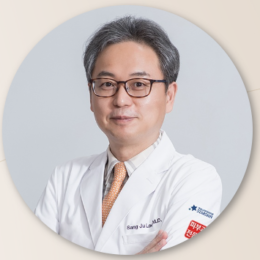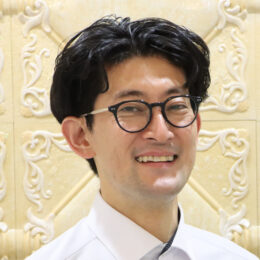
In this article, we will introduce a new trend in acne scar treatment: “combined POTENZA and PLLA treatment”. This method in fact has received a lot of attention recently. Please take a look, you can expect even more advanced effects than previous treatments.
- INDEX
Types of Acne Scar (01:14~)
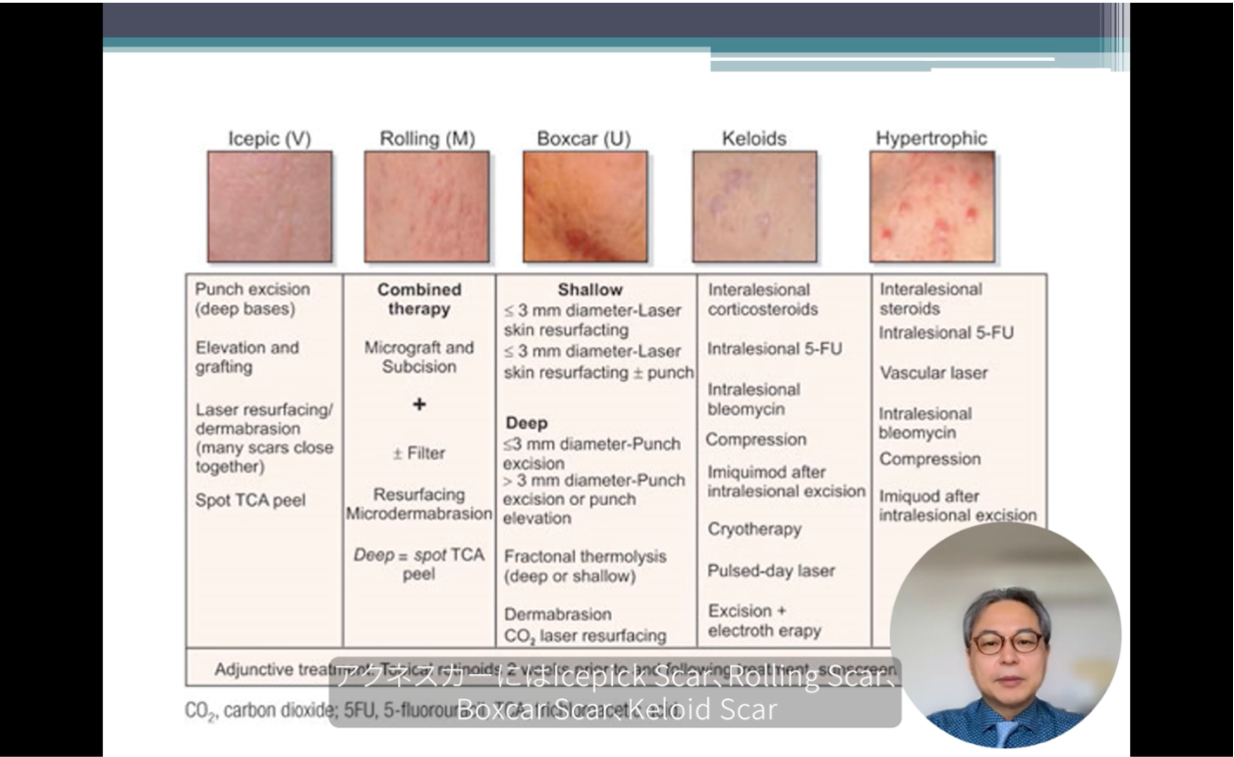
There are several types of acne scars. The most common are “Icepick Scar”, “Rolling Scar” and “Boxcar Scar”. As the names suggest, they differ in appearance and cause.
Icepick Scar, for example, is characterized by a very deep scar that forms a sharp point, like a needle. Rolling Scar, by contrast, have a bumpy, wave-like surface. And Boxcar Scar is a square-shaped dent. In many cases, these scars are mixed together, and require different treatments.
Acne Scar Treatment “C.A.R. Approach” (01:48~)
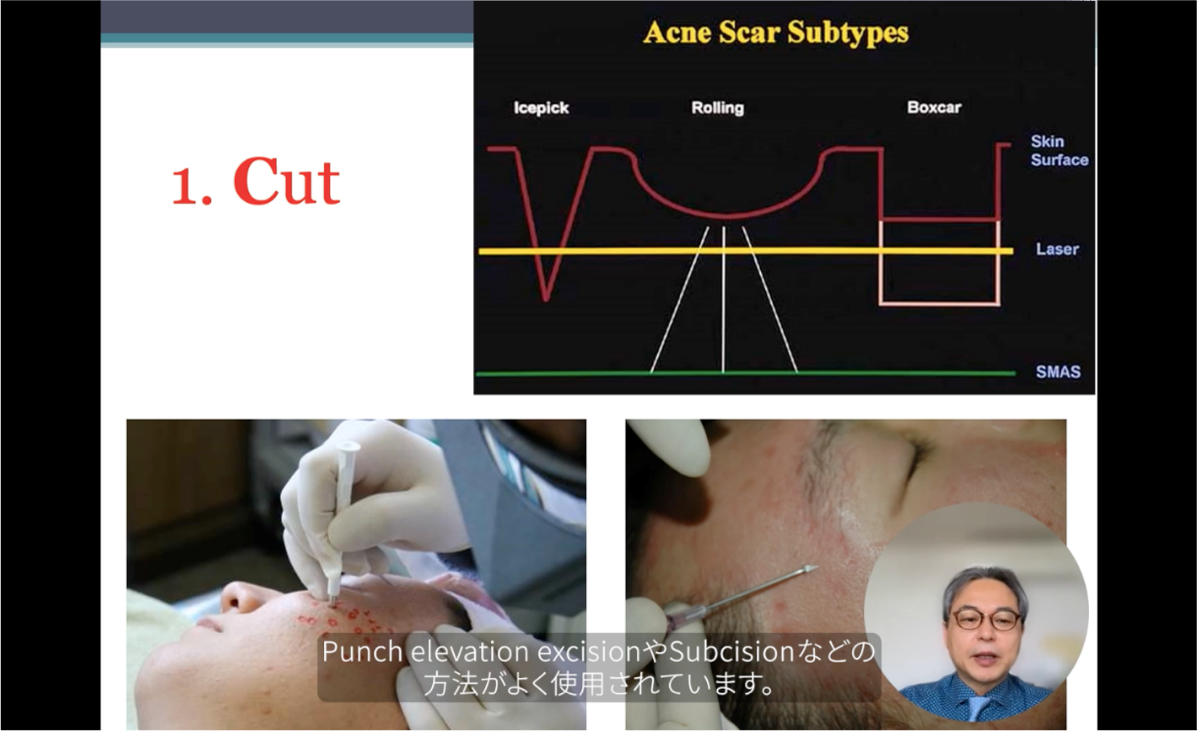
I often use a method called the “C.A.R. Approach” to treat acne scars. This approach consists of a three-step treatment process.
1.Cut
The first step is “Cut”. Using a needle or punch, the scar is physically excised, aiming to improve the scar from the root. This is effective for deep ice pick scars.
2.Augmentation
The next step is “Augmentation”, which involves using fillers or one’s own blood to fill in the scar. Recently, “Poly Lactic acid”, which promotes collagen production, has been attracting attention. Unlike fillers, this ingredient promotes long-term collagen production, rather than just temporary, so you can expect to see lasting improvements.
3.Resurfacing
The final step is “resurfacing”. Using lasers and radiofrequency (RF), the surface of the skin is rebuilt. This improves the texture of the skin and makes scars less noticeable. Recently, it has become possible to perform effective treatments with less downtime by using two types of laser: ablative and non-ablative.
Combined use of the latest device “POTENZA” and PLLA (15:58 ~)
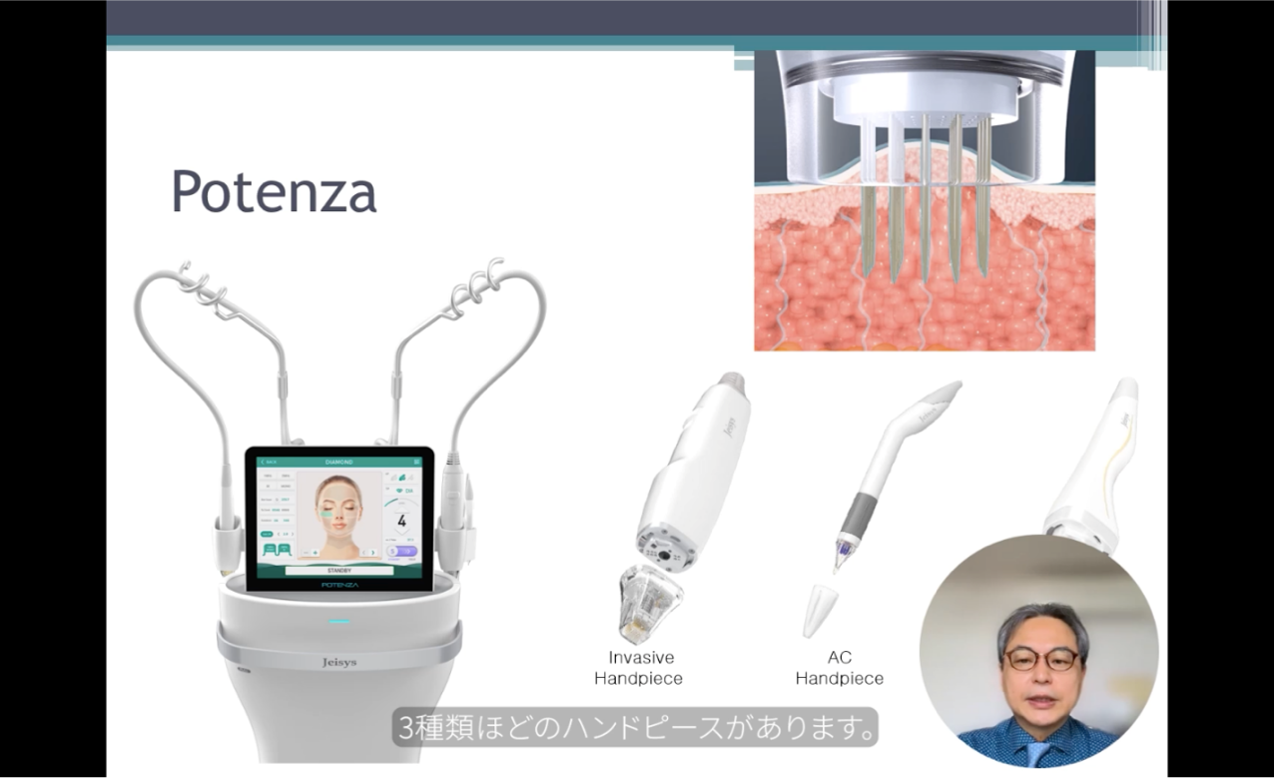
Recently, I pay particular attention to a treatment that combines the device “POTENZA” with Poly-L-Lactic-Acid (PLLA). This device uses microneedle RF technology to work on the deeper layers of the skin. POTENZA is not only effective for acne scars, but also wrinkles and pores.
By combining POTENZA with PLLA, new collagen is generated from within the skin, and the improvement of acne scars lasts longer. Unlike fillers, it also has the advantage of providing a natural finish.
Actual Treatment Case (17:33~)
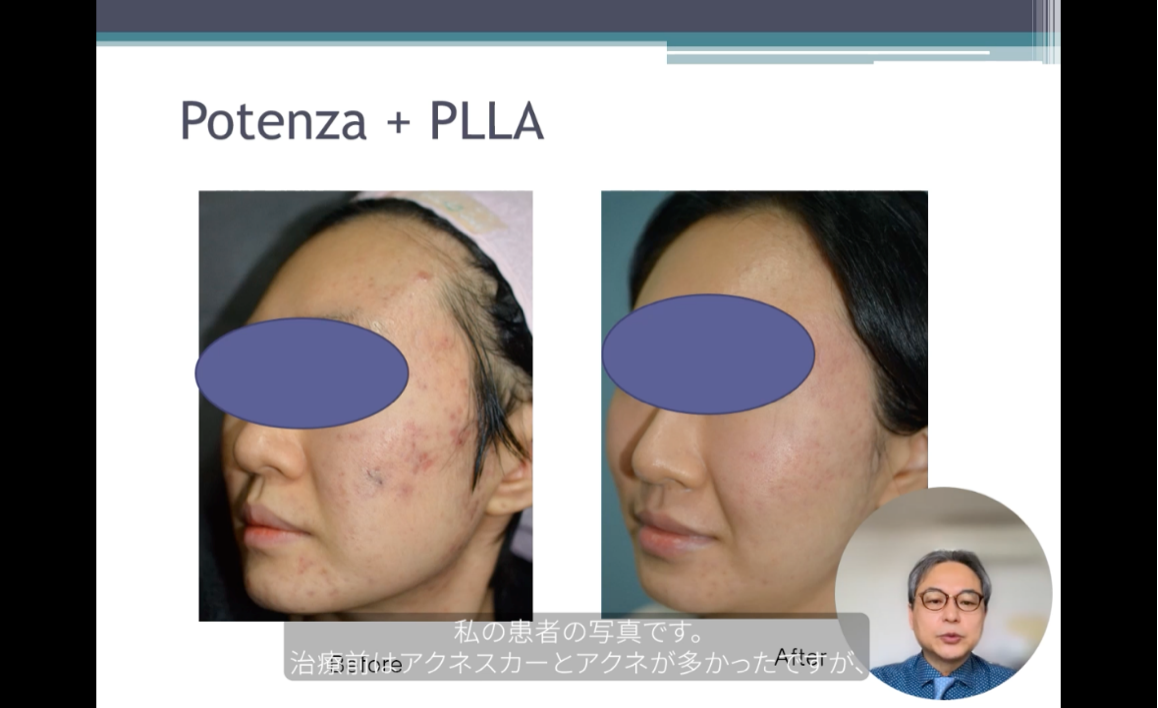
I will show you a case of a patient I treated. Combining POTENZA and PLLA resulted in a significant improvement not only in the acne scars but also in the acne itself. In addition, the pores tightened and the skin texture improved remarkably.
In particular, patients have given it high marks for its short downtime. Patients can return to their daily lives soon after, which is attractive for people who don’t have much time.
Expectation for POTENZA and PLLA (20:01~)
Acne scar treatment will continue to evolve in the future, but at this stage, the combination of POTENZA and PLLA is a very effective method. I would like patients suffering from acne scars to try this treatment method, which can produce results while minimizing downtime.
